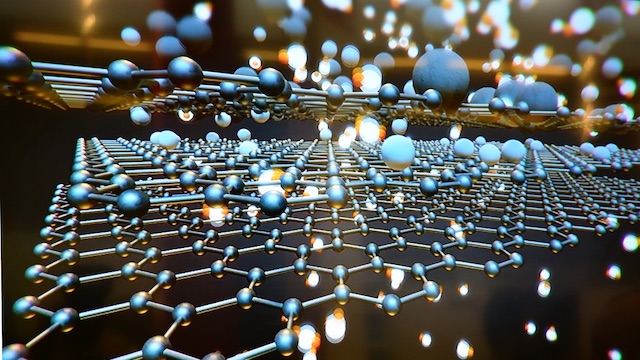
Researchers from the Massachusetts Institute of Technology (MIT) have designed a new way to quickly and efficiently harvest 2D materials. Scientists believe that this will pave the way for commercialization of 2D materials, which has long eluded them. The materials have an assortment of uses and applications in a variety of fields, from creating semiconductors to creating ultra-thin wearable devices.
In 2003, scientists discovered a new carbon material called graphene. Graphene is just a single-atom-thick. 2D materials can operate as semiconductors; that, paired with their minute size, makes them ideal for creating transparent, ultra-thin, and flexible wearable electronics.
Unfortunately, this has proven easier said than done. Scientists quickly discovered that taking a bulk crystal material and separating it into 2D flakes was no easy task. The process proved to be time-consuming and costly, making it difficult to expand to the commercial level.
MIT scientists retooled the entire process, cutting down what used to take hours into just a few minutes. The process allows for 2D materials to be harvested in 2-inch diameter wafers quickly and efficiently. Within an hour of being harvested, these wafers can be stacked together to create a functioning electronic device. Scientists believe this process could be used on a wide variety of 2D materials.
A thick stack of 2D material was grown on top of a wafer made of sapphire. Scientists then covered the stack with a 600-nanometer-thick nickel film. 2D material adheres better to nickel than it does to sapphire, allowing the stack to be separated from the wafer.
The adhesion between the nickel and the individual 2D material layers is actually greater than the adhesion between the layers themselves. This means that by simply adding a second nickel film to the bottom of the stack, scientists were able to peel off individual monolayers of 2D materials that were just a single atom in thickness.
This technique has proven effective for a wide range of 2D materials. Scientists say that molybdenum disulfide, hexagonal boron nitride, and tungsten disulfide can all be harvested in this manner. The technology allows for different types of monolayer 2D materials to be produced, including semiconductors, insulators, and metals. Scientists believe that this new technology is ideal for the commercialization of 2D materials.